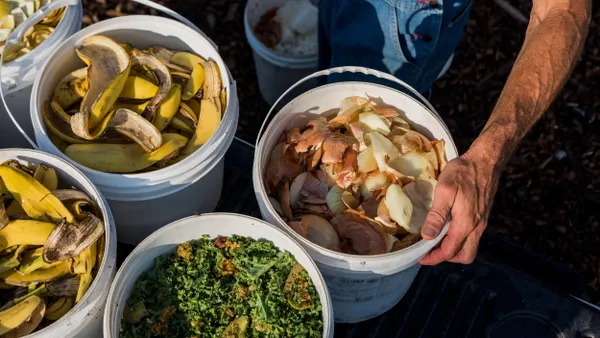UPDATE: New York's Department of Sanitation (DSNY) has officially published a proposed rule to expand the types of commercial establishments covered by its organics diversion mandate.
This decision, backed up by DSNY's determination that adequate processing capacity exists in the region, will affect an estimated 2,000 new businesses. The published rule reiterates plans to cover large restaurants, chain establishments with more than 50 locations in the city, and large retail stores. The proposal stipulates that this will also apply to any retail stores with three or more locations with a combined floor area space of at least 10,000 square feet, and operate under the same control, with service from the same commercial waste company. Any covered businesses that are currently using on-site organic waste processing equipment, or plan to, would also now be required to renew that registration annually.
A public hearing on this proposal has been scheduled for Oct. 31, with comments due by the end of that business day. If approved, the rule is expected to begin taking effect sometime in 2018.
Dive Brief:
- New York's Department of Sanitation (DSNY) has announced plans to expand organics diversion requirements to multiple new business categories that currently generate an estimated 50,000 tons of food waste per year.
- The proposed rules would apply to about 2,000 businesses, according to DSNY. This would include restaurants or establishments larger than 7,000 square feet, chain establishments with 50 or more locations in the city and retail stores larger than 10,000 square feet. Businesses would be required to arrange for source-separated collection or find another DSNY-approved solution to manage their organic waste.
- DSNY will officially introduce these rules "later this summer," which will then lead to a multi-month public hearing and comment period. Once adopted, the rules would take effect in six months and fines would be enforceable within a year.
Dive Insight:
DSNY estimates that about 650,000 tons of commercial food waste are generated in the city each year. Their current commercial organics diversion requirements — which originated from a 2013 law — took full effect in January of this year. This applies to about 300 of the city's largest food waste generators: stadiums, arenas, hotels, food manufacturers and wholesalers.
The original law gave any DSNY commissioner authority to expand diversion requirements as they saw fit and it's been no secret that Commissioner Kathryn Garcia was interested in growing the program soon. She announced the decision this week at Citi Field, home to the New York Mets, as a way to highlight successful compliance with the current rules. Timing the announcement one week ahead of the first NYC Food Waste Fair will also give businesses in the new categories a chance to learn more about their options if they hadn't already been planning to attend.
While some local grocery stores, restaurants and catering companies have been diverting their organics for years, the city had been waiting to expand the commercial mandate until sufficient capacity was available. According to DSNY, a survey conducted earlier this year identified "at least 100,000 tons per year of potentially uncommitted processing capacity" available in the region. Though aside from the Newtown Creek Wastewater Treatment Plant and a small composting operation on Staten Island, the city doesn't currently have any of its own organics processing infrastructure.
Siting new facilities is often raised as the main obstacle, though skeptics say the city should at least work to lock down more long-term processing options in the region. The city currently has multiple five-year contracts in place to export its residential and institutional organics, though the terms allow flexibility on where haulers can take the material. Commercial collection and processing remains an open-ended system. The concern is that if regional capacity becomes too tight, the closure of a facility or competing volumes from other municipalities could interfere with New York's efforts. DSNY has long maintained that one of the best ways to encourage development of new capacity is to guarantee more feedstock through residential expansion and new commercial diversion mandates.
A recent proposal to enact a statewide diversion mandate in New York could have helped spur more regional processing development, but it didn't survive budget negotiations in the state legislature this spring. The five states and multiple cities that do have some form of organics diversion requirement address this capacity question in a variety of ways. In many cases, commercial diversion mandates have come first, or been paired with residential pilots, to help establish steady volumes of feedstock for regional processing operations. Some states, like Massachusetts, have been more measured in their approach, while others, such as Vermont and California, have been moving forward more aggressively. New York City already has the largest residential organics program in the country and this newest round of requirements could soon put it on pace to have the largest amount of commercial participants.











